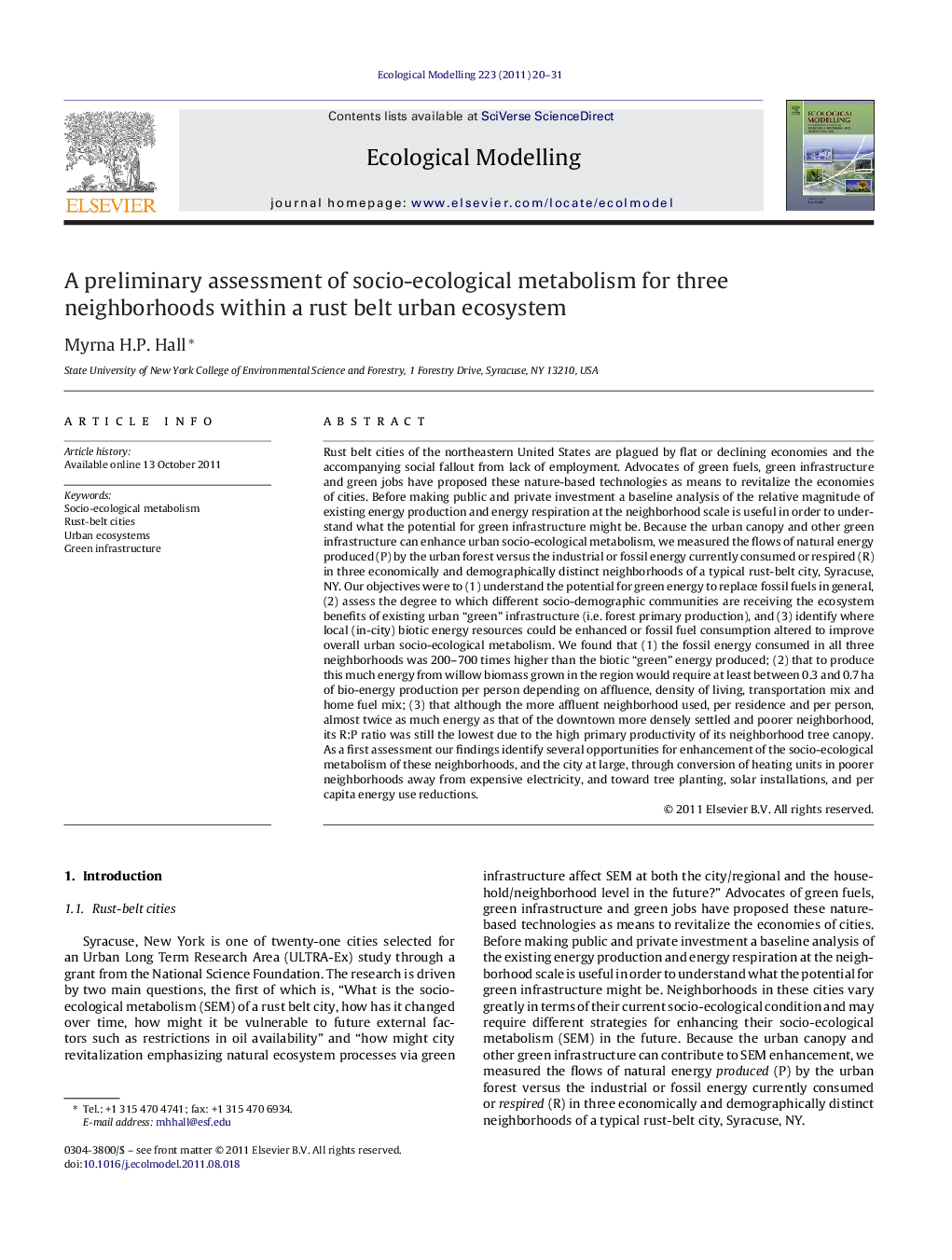| Article ID | Journal | Published Year | Pages | File Type |
|---|---|---|---|---|
| 4376697 | Ecological Modelling | 2011 | 12 Pages |
Rust belt cities of the northeastern United States are plagued by flat or declining economies and the accompanying social fallout from lack of employment. Advocates of green fuels, green infrastructure and green jobs have proposed these nature-based technologies as means to revitalize the economies of cities. Before making public and private investment a baseline analysis of the relative magnitude of existing energy production and energy respiration at the neighborhood scale is useful in order to understand what the potential for green infrastructure might be. Because the urban canopy and other green infrastructure can enhance urban socio-ecological metabolism, we measured the flows of natural energy produced (P) by the urban forest versus the industrial or fossil energy currently consumed or respired (R) in three economically and demographically distinct neighborhoods of a typical rust-belt city, Syracuse, NY. Our objectives were to (1) understand the potential for green energy to replace fossil fuels in general, (2) assess the degree to which different socio-demographic communities are receiving the ecosystem benefits of existing urban “green” infrastructure (i.e. forest primary production), and (3) identify where local (in-city) biotic energy resources could be enhanced or fossil fuel consumption altered to improve overall urban socio-ecological metabolism. We found that (1) the fossil energy consumed in all three neighborhoods was 200–700 times higher than the biotic “green” energy produced; (2) that to produce this much energy from willow biomass grown in the region would require at least between 0.3 and 0.7 ha of bio-energy production per person depending on affluence, density of living, transportation mix and home fuel mix; (3) that although the more affluent neighborhood used, per residence and per person, almost twice as much energy as that of the downtown more densely settled and poorer neighborhood, its R:P ratio was still the lowest due to the high primary productivity of its neighborhood tree canopy. As a first assessment our findings identify several opportunities for enhancement of the socio-ecological metabolism of these neighborhoods, and the city at large, through conversion of heating units in poorer neighborhoods away from expensive electricity, and toward tree planting, solar installations, and per capita energy use reductions.
► We establish the baseline metabolism of three rust-belt neighborhoods. ► We measured flows of natural energy produced versus industrial energy respired. ► We found that fossil energy consumed was 200–700 times that produced by the urban forest. ► To replace industrial energy 0.3–0.7 ha of bio-energy would be required per person. ► Appropriate green technologies depend on neighborhood affluence, density, and home fuel mix.
